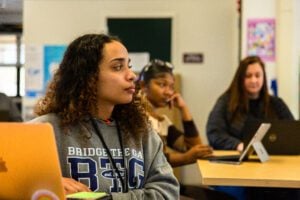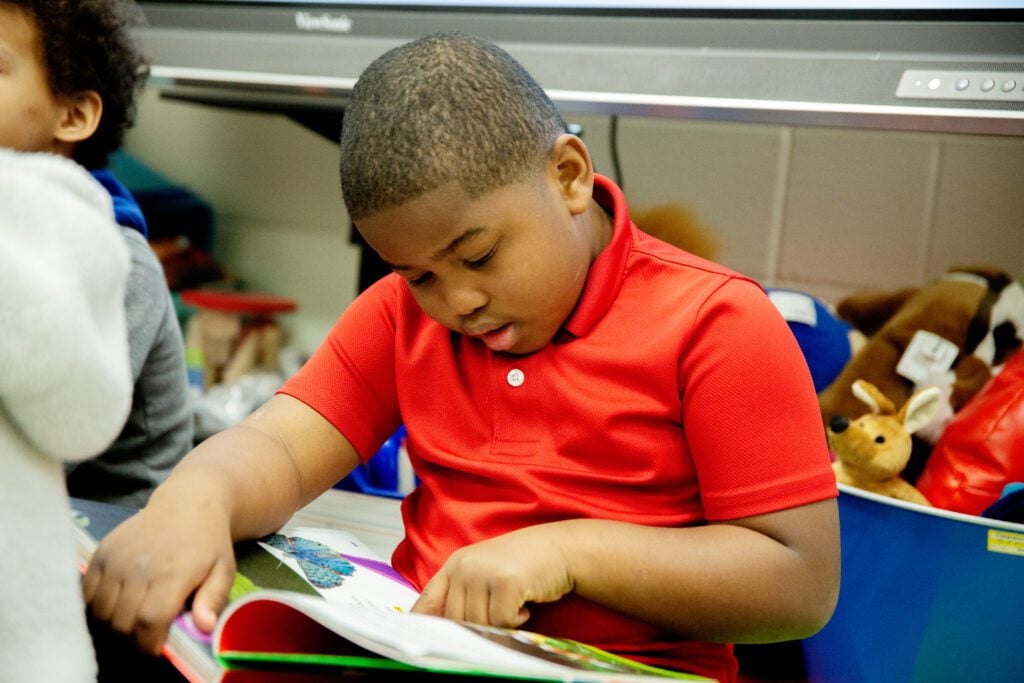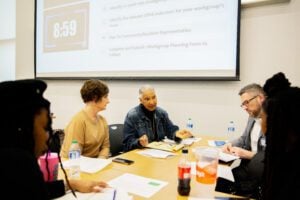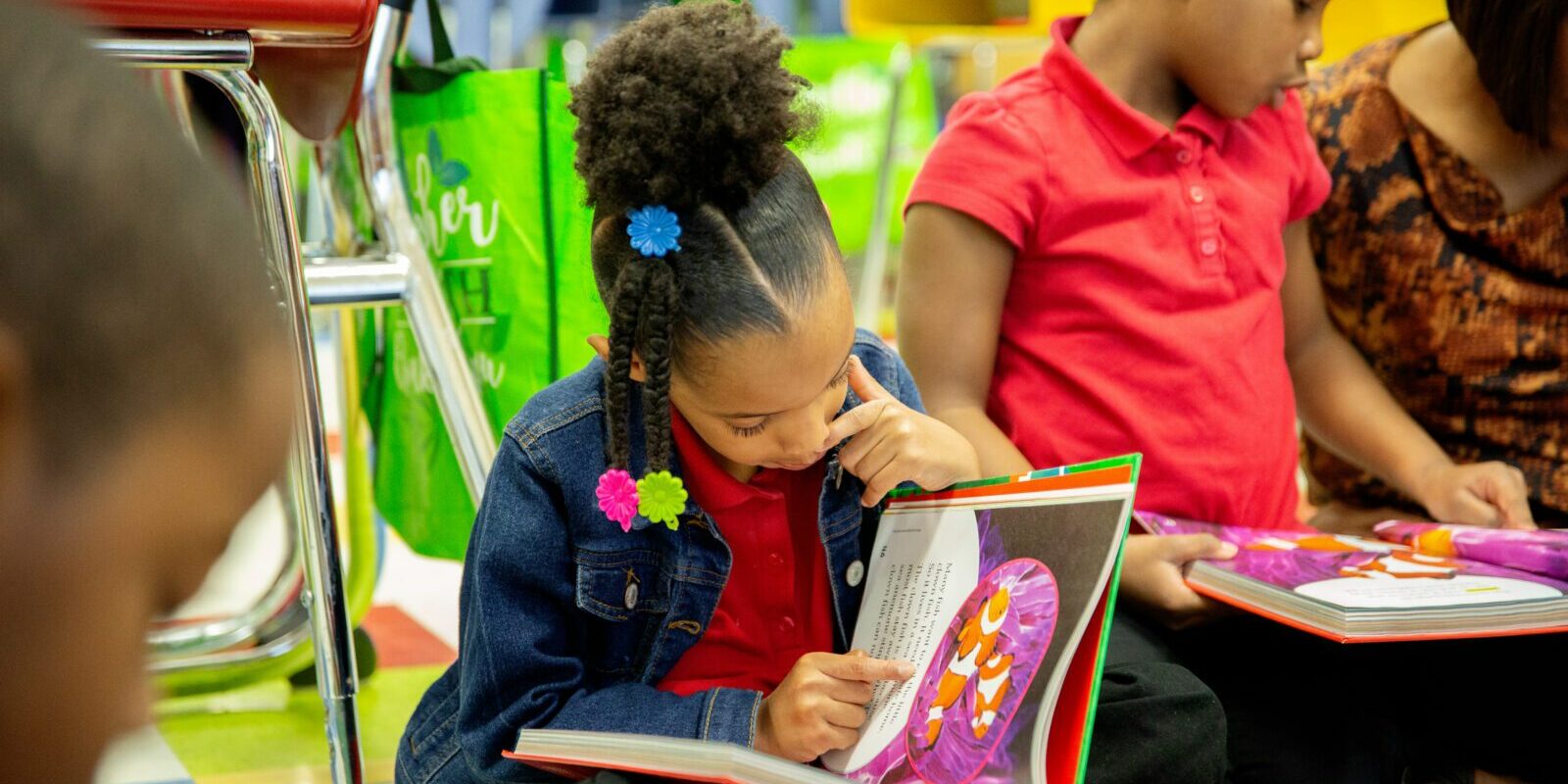Recently, the National Assessment of Educational Progress (NAEP), the gold standard of federal standardized testing, released data indicating that 13-year-olds have hit the lowest math and reading performance scores in decades. Unsurprisingly, this correlated with data about learning loss from the pandemic, especially for children of color. As I read this newest report, I reflected on what I have learned over the last decade working across the country with cradle-to-career communities. Despite the NAEP data, I see great work happening in communities now that gives me hope.
Despite the challenges presented to us in aggregate, it is our shared responsibility as a country to understand and focus on what’s working. Just like in medicine, where case studies are developed around best practices and groundbreaking research in order to treat ailments, I believe that experts in the field can study what has been working for children and families so that best practices can scale them across the country. Otherwise, those working in education might remain in paralysis, overwhelmed by the scale of the challenge; or worse, deploying reactionary tactics driven by theory or ideology rather than effective practice. 
So where to begin? Despite national challenges, a number of communities defy the data: there are schools (more appropriately, communities) across the country that have returned to or surpassed pre-pandemic reading and math levels. At StriveTogether, we refer to them as “bounce back” communities – but don’t let the name fool you, they are really showing the way forward. These communities are part of the StriveTogether network and they are all aligned around a shared vision for getting better outcomes for kids, cradle to career.
In Dayton, Ohio, Learn to Earn Dayton and Dayton Public Schools developed a dual-teaching model for grades K-3, with one teacher focused on literacy and one teacher focused on numeracy. In just one school year, reading scores increased by 12 percentage points and math scores improved at an average of 22 points over the prior pandemic-impacted year, surpassing projections based on national norms.
In California, the Marin Promise Partnership used data-sharing agreements and automated data dashboards to focus on progress, which helped shape policies and practices for school districts on foundation coursework. Before the pandemic, college and career readiness rates improved from 56% to 71% for all students in Marin and 42% to 54% for students of color. Though they dropped slightly during the pandemic, they quickly bounced back and surpassed those numbers this year.

We are seeing similar outcomes in Texas as well. While the region lost a decade of learning during the pandemic, third grade reading in the Lancaster Independent School District improved from 37% in 2019 to 45% in 2022 compared to a 41% to 43% increase in Dallas County and 43% to 50% in the state. This school district has the highest rate of students experiencing economic disadvantage in the county, yet teachers and students achieved the biggest reading gain due its focus on early childhood education, investment in reading and centralized learning recovery. Despite the NAEP data, these results point to effective and scalable solutions that more policymakers and school districts should adopt to make a lasting impact. Each of the bounce back communities hold these things in common:
Civic Infrastructure: StriveTogether members have strong cross-sector collaboration and community-level partnerships that are aligned on a shared vision with specific and measurable outcomes to track their progress over time. As witnessed by Brooks, these communities are bringing together school leaders, nonprofits, elected officials, parents, families and so many more to understand and scale what works for kids.
Evidence-based decision making: Members put data, both qualitative and quantitative, at the center and use it to drive collaboration and changes. By doing so, effective practices that have evidence of improving student outcomes were in place long before the pandemic and data-driven innovations piloted during the pandemic pointed the way to a faster recovery from learning loss (I’ve heard people use unfinished learning as a frame).

Short, medium, and long-term investments: While it is important to deal with immediate and urgent problems which sometimes resembles firefighting – a reference perhaps too close to home these days with wildfires to our north, we also need to move upstream and solve for the root causes of inequitable and unsatisfactory outcomes. The reality is that the pandemic didn’t directly cause math and reading scores to drop – it simply exacerbated existing problems that have yet to be addressed as a nation, especially around equitable access to education, the gap between what is known to work for children and what is implemented in communities and schools. With a moment in time when resources are less scarce thanks to federal intervention, communities must not only “fight the fires” directly in front of them but also invest in the kind of durable, data-driven, cross-sector civic infrastructure that leaders in Dallas, Dayton, Marin and Spartanburg are creating to close the gap between aspirations for kids and the outcomes produced through the systems that have been designed and developed over the decades.
It is far too easy to get lost in the national discourse and forget about the good things that are happening in local communities all around us. These “bright spots” should be the torch bearers in dark times, showing all others the pathways that will lead to a future where a child’s potential will no longer be dictated by their race, ethnicity, zip code or circumstance. Or a pandemic. These are the communities that are showing everyone what is possible in America – and that is a really good thing.






